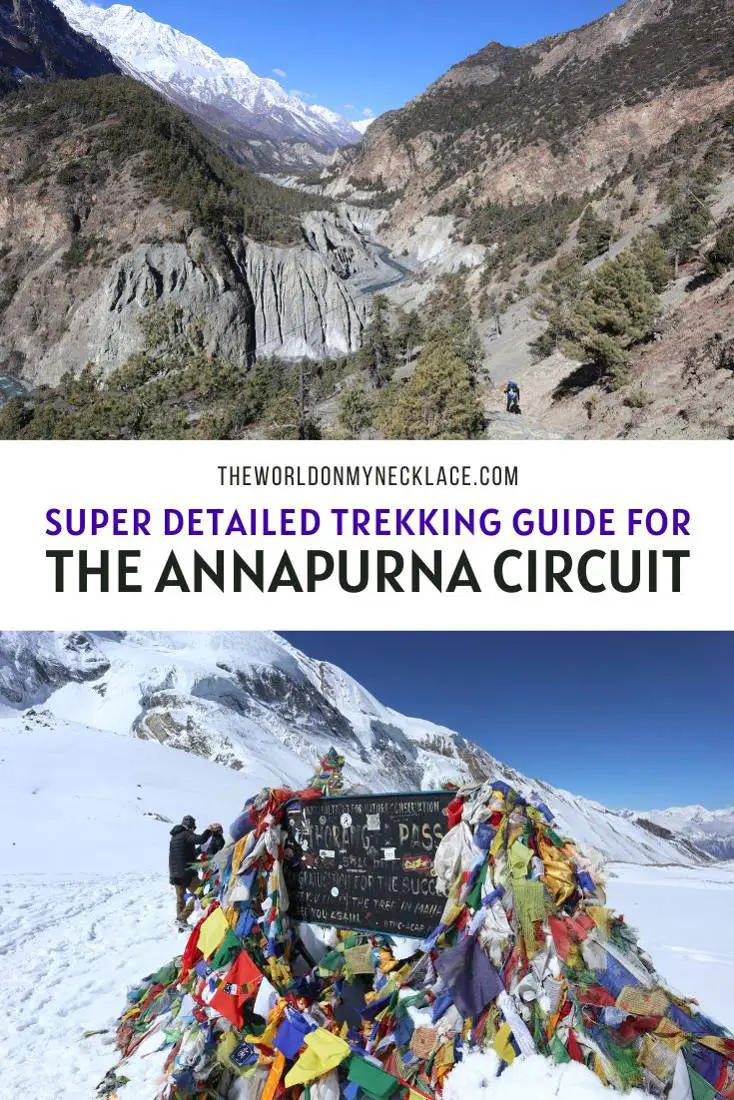This post may contain affiliate links. If you make a purchase through an affiliate link, I will earn a commission at no extra cost to you. Thanks for your support.

Use this detailed Annapurna Circuit trek guide to help plan your trekking Annapurna Circuit adventure. I hiked the Annapurna Circuit in March 2023 and it was one of the best things I have ever done. Happy trekking!
The Annapurna Circuit is one of the most well-known, and most beautiful, multi-day treks in the world. It takes you around the Annapurna Massif and through two mountain valleys high into the Himalayas in Nepal.
You will pass through colorful Tibetan and Nepalese villages, across raging rivers on suspension bridges, past prayer wheels and temples, and over mountain passes covered in snow.
You will see some of the most epic and incredible mountain scenery anywhere in the world, and it will be tough, but it also may be one of the best experiences of your life, I know it was for me.
I had wanted to do the Annapurna Circuit Trek for as long as I could remember and I had tried to do it twice before, but my attempts were thwarted both times due to differing circumstances. I finally hiked the circuit in March 2023 and it was well and truly worth the wait.
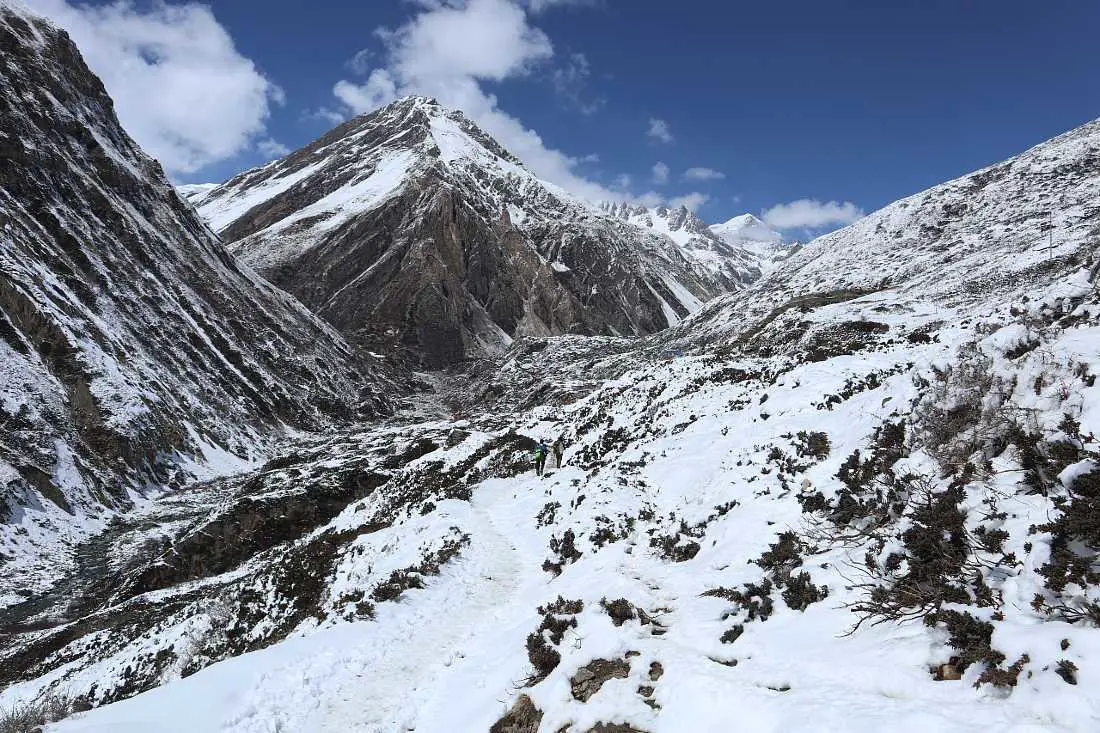
In fact, it is one of my absolute favorite travel experiences after traveling the world for nearly 20 years through 67 countries. Seriously.
I put together this Annapurna Circuit Trek guide to help you decide how you are going to do the trek and all the info you need to know when planning for it. I hope it’s helpful.
My Ultimate Trekking Annapurna Circuit Guide: All the Info
The full original Annapurna Circuit trek starts in Besisahar and ends in Nayapul. It is 260km/161 miles and it takes around two to three weeks to hike, depending on your pace. Basic roads have since been built from Besisahar to Manang, and Muktinath to Nayapul so there are now only three days of walking where there are no roads at all.
The highest point is Thorong La Pass at 5,416 meters (17,769 feet), and the starting point in Besisahar is 760 meters (2,490 feet). Due to the large change in elevation, the scenery is diverse and slowly changes as you ascend and then descend after summiting the pass.
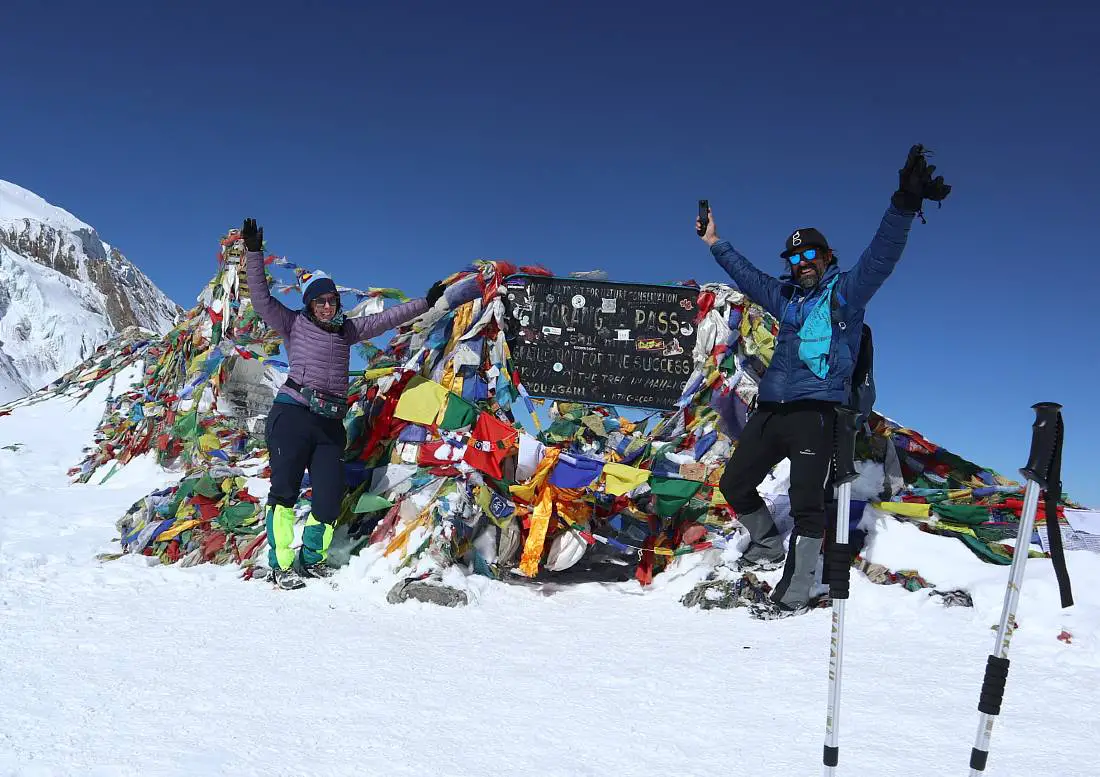
Do You Need a Guide?
As of April 1 2023, you officially do need to hire a guide for trekking the Annapurna Circuit but from what I have been hearing in the Annapurna Circuit Trek Facebook group, a lot of people have been hiking independently and haven’t had any issues doing so.
We hiked the Annapurna Circuit independently and it was a good option for us although our friends had a guide and there are a lot of benefits for that too.
Pros of Trekking the Annapurna Circuit Independently: Less expensive, more freedom to plan your trek as you go, and it’s more likely you will end up meeting and hiking with other hikers.
Cons of Trekking the Annapurna Circuit Independently: If something goes wrong it’ll be harder to get help, it can be very stressful route planning and doing everything yourself, it’s more likely you could get lost, and you won’t get all the background, history, etc of where you are hiking.
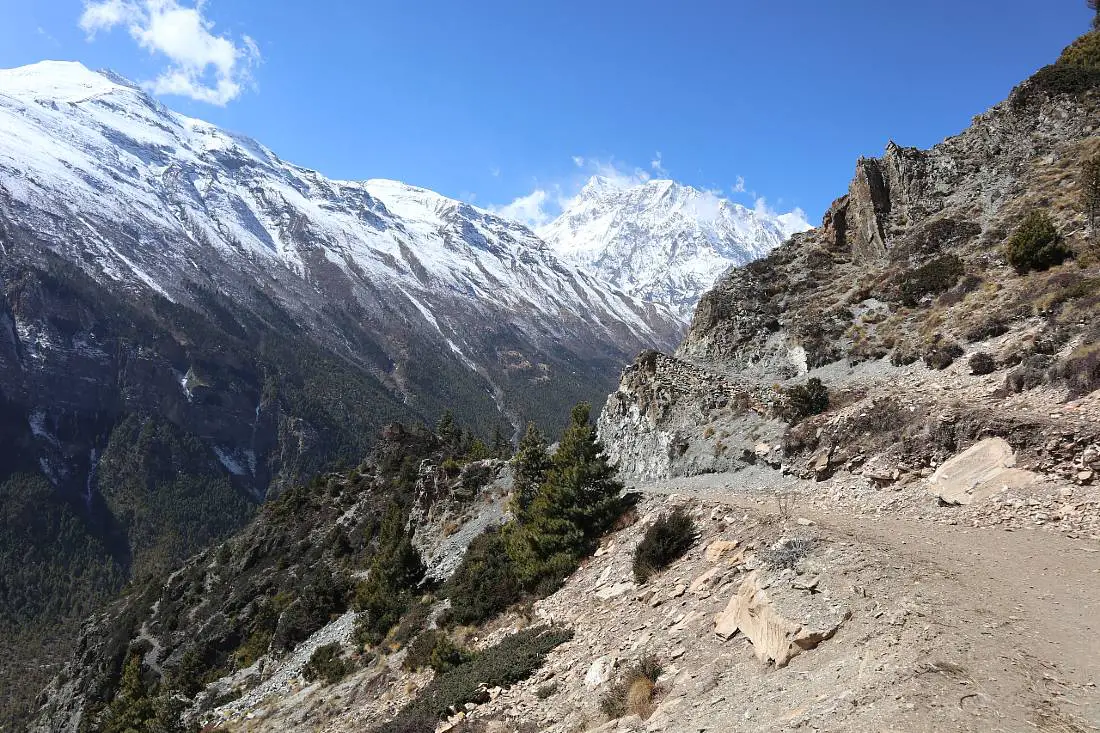
In comparison, here are the pros and cons of hiking with a guide or on a group tour:
Pros of Trekking the Annapurna Circuit With a Guide: Gain knowledge of the places you are hiking, supporting the local community, no stressful route planning, guides know the best guesthouses for lunch and to stay at, your guide will keep you safe, and if something happens they will know how to contact help.
Cons of Trekking the Annapurna Circuit With a Guide: More expensive, isn’t always conducive to meeting independent trekkers, could be a bad experience if you don’t end up liking or trusting your guide or group, a more rigid schedule.
If you are hiking solo or don’t have a lot of high-altitude hiking or any hiking experience, I highly recommend you hire a guide or join a group package for your Annapurna Circuit trek. This trek is no joke and many people have died over the years from bad weather, altitude sickness, falls, and more. Don’t be one of them.
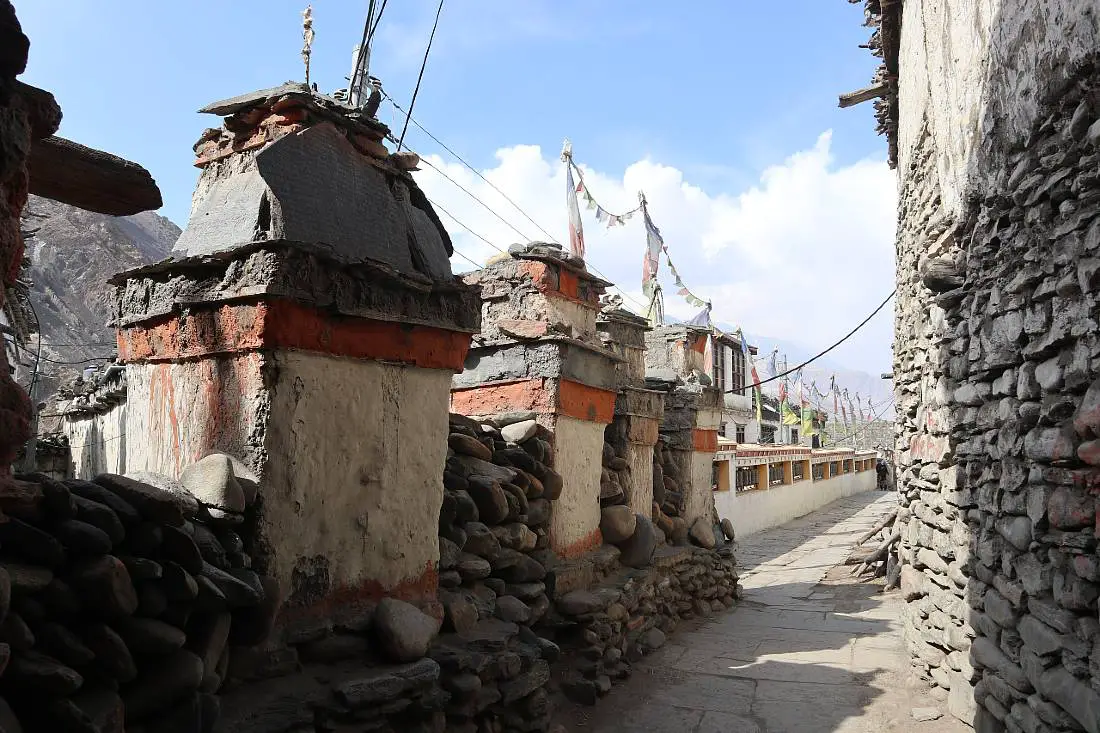
Is it Still Worth Trekking the Annapurna Circuit?
Some people who trekked the Annapurna Circuit years ago before the road was built say that it isn’t worth hiking it anymore, but I disagree. I can’t compare what it was like hiking it then to now but I thoroughly enjoyed my experience and it is definitely worth hiking.
It is relatively easy to avoid the road for a lot of the time as alternative walking trails have been built. We also found the road from Besisahar to Manang had hardly any vehicles on it when we trekked in early March, although this could be completely different in the busiest months of April, November, and December.

The Best Time To Trek the Annapurna Circuit
There are two trekking windows where it is the best time to hike the Annapurna Circuit – mid-March to the beginning of May, and October and November. The autumn months of October and November are the most popular due to the skies being clearer at lower elevations and the weather generally being more stable.
You can technically hike the Annapurna Circuit all year round but it would be bitterly cold in winter (December – February) and the pass is more likely to close due to too much snow and dangerous storms. In the hot summer months of June – August, it is very hot and wet at lower elevations of the hike and there is a serious risk of landslides so it is also not recommended to hike the circuit then.
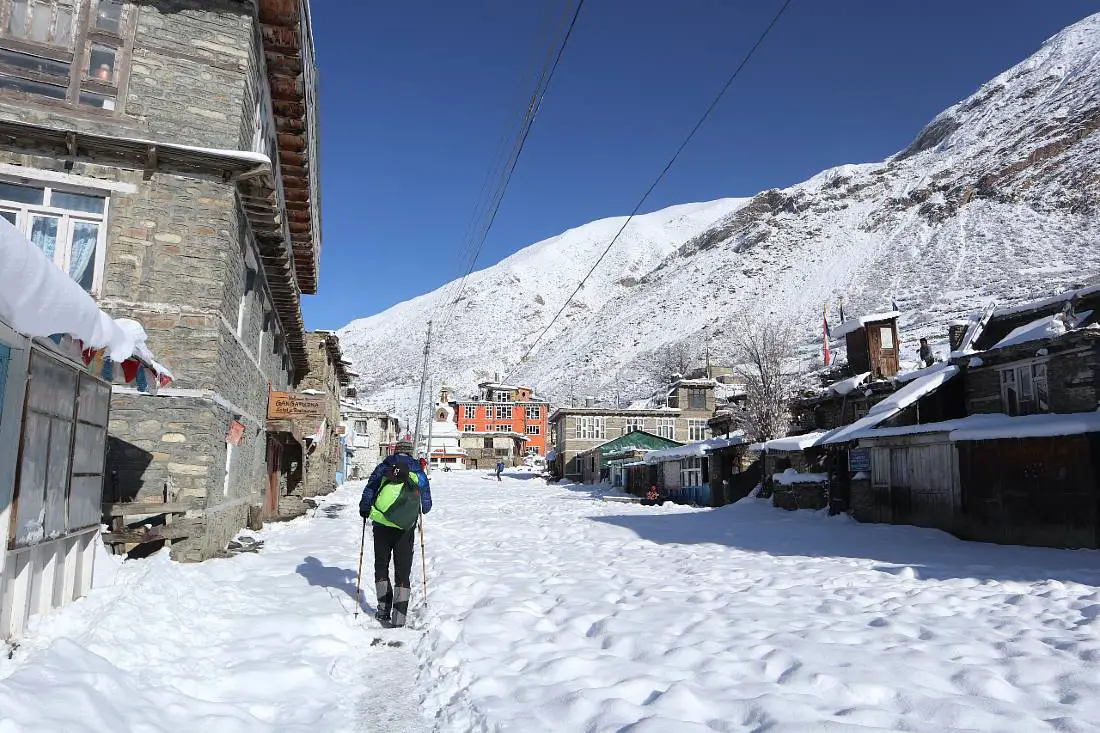
We started hiking a couple of weeks before the spring season officially started, from March 1st-13th. We did have one day when we were snowed in at Manang (luckily it was our scheduled rest day!) and then quite thick snow the next day and from Thorong Phedi up to Thorong La Pass but we generally had beautiful weather. It was colder at higher altitudes than it would have been a month or so later though.
It was also a little hazy for the first three days until we reached higher altitudes and we had a few afternoon storms but we were done hiking for the day once they hit. The plus of starting in early March is that the crowds are much thinner, and it is much more comfortable hiking at lower temperatures – it can get very hot and sticky by April.
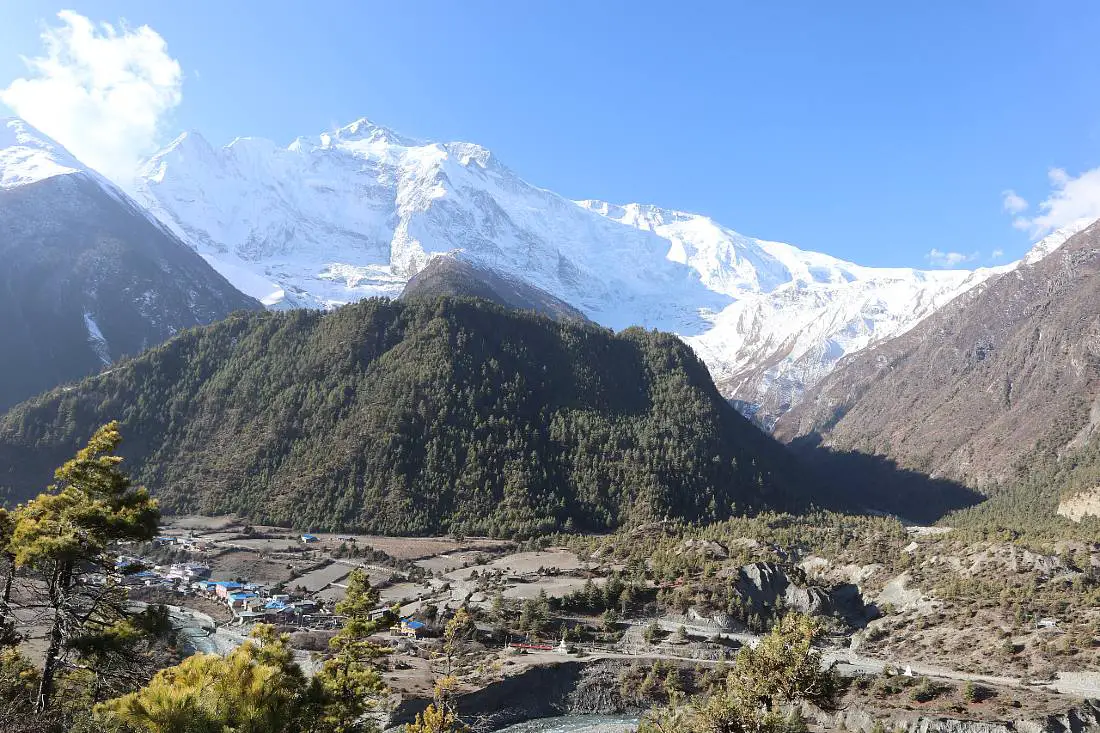
Annapurna Trek Permits
Pre-April 1st 2023, you needed to apply for both TIMS (Trekker’s Information Management Systems) and ACAP (Annapurna Conservation Management Project) before trekking if you were hiking independently.
From everything I have been reading recently, you no longer need to apply for a TIMS card, just ACAP if you are hiking without a guide. You can get your ACAP at the Nepal Tourism Board Office in Kathmandu or Pokhara, the office in Besisahar has just recently closed.
I have also read that you can get it in Khudi which is a village close to Besisahar but I’m not sure exactly where the office is.
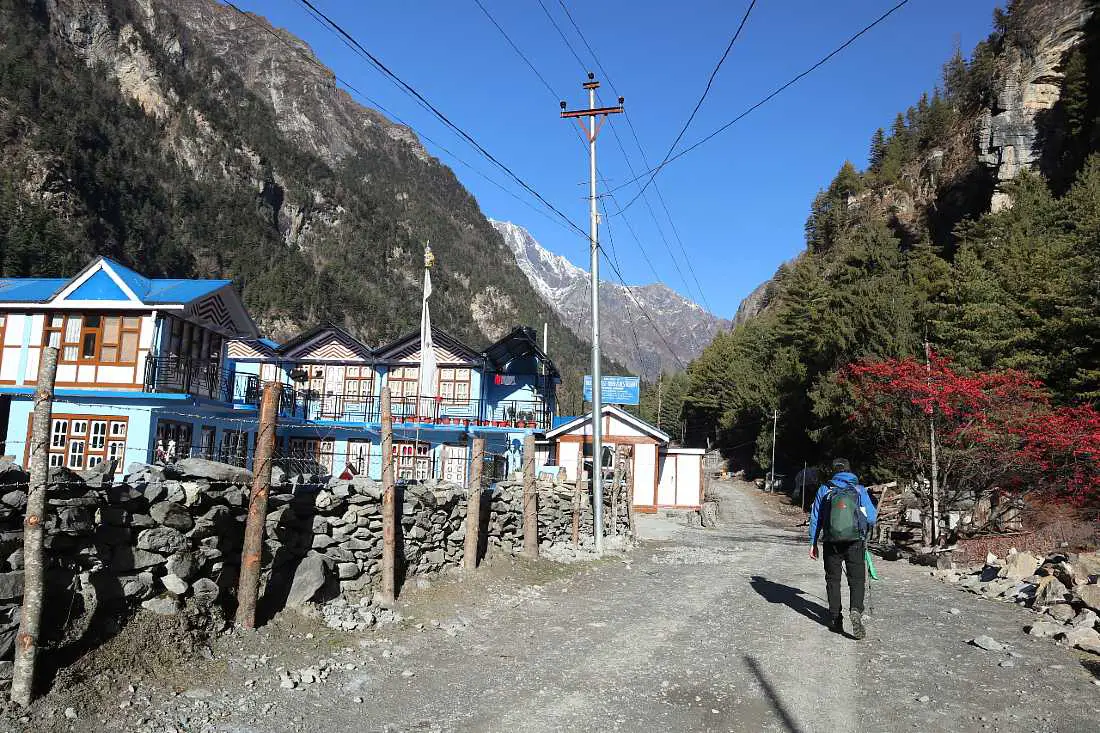
It costs 3,000 rupees (around $23) and you need to take your passport, two passport photos (I believe you can get photos taken for free there but I took my own), proof of your insurance, and the fee in Nepalese rupees. Check opening times for the office you plan to go to to ensure you don’t turn up when it is closed.
If you have hired a guide or are on a group tour, they will organize the ACAP for you, they’ll just need the above items to do this.
My Annapurna Circuit Trek Itinerary: Besisahar To Marpha
There are so many ways you can do this trek depending on how much time you have, what your fitness level is, how many hours you want to hike each day, and your budget – the options are endless.
I did a lot of research before we did the hike to decide what Annapurna Circuit Trek itinerary would best fit with what I wanted out of the experience and I was really happy with how everything turned out.
I spent thirteen days trekking from Besisahar to Marpha including a rest day in Manang. We also cut out the 10km dusty road section between Kagbeni and Jomsom by taking a bus.
My goal was to hike for 5-7 hours per day and then have the late afternoon/evenings to socialize and relax in the teahouses. Experiencing the teahouses is a big part of what makes the Annapurna Circuit special. We could have pushed ourselves more and hiked more miles per day but I’m really happy with how we did it.
Here is the basic outline of our Annapurna Circuit Trek Itinerary:
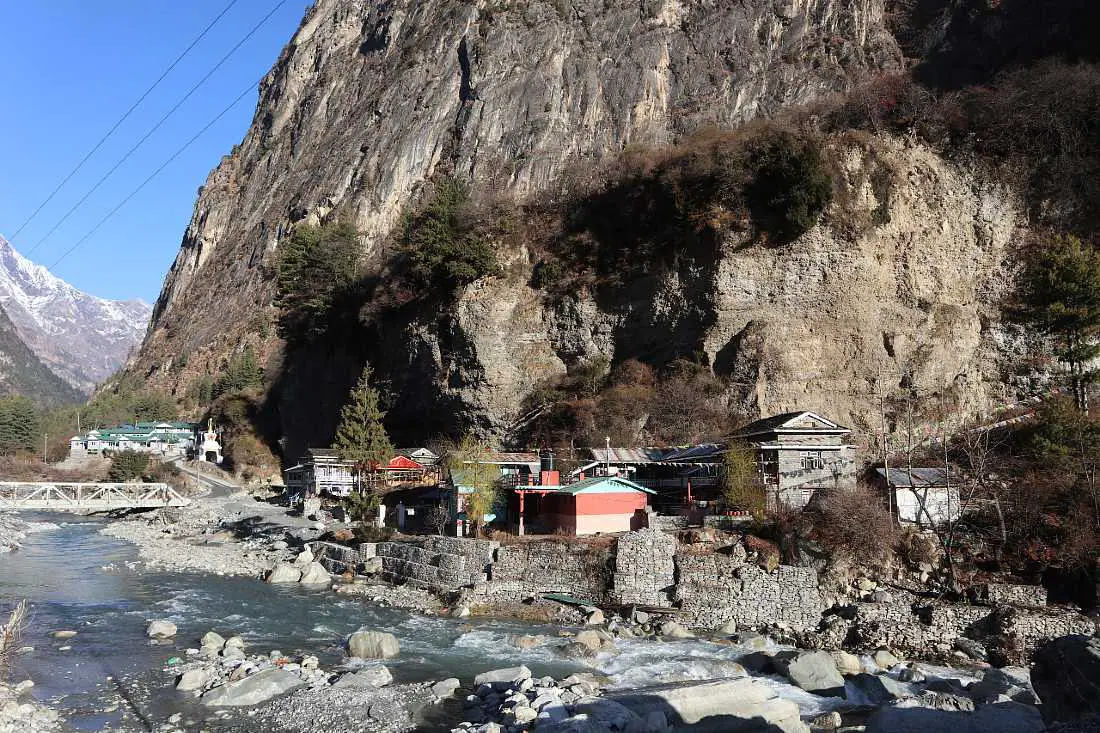
Day 1: Bus from Pokhara to Besisahar – 5 hours. Besisahar to Bhulbhule – 9km/5.6 miles.
Day 2: Bhulbhule to Jagat – 19km/11.8 miles.
Day 3: Jagat to Dharapani – 17km/10.5 miles.
Day 4: Dharapani to Chame – 17km/10.5 miles.
Day 5: Chame to Upper Pisang – 16km/10 miles.
Day 6: Upper Pisang to Ngawal – 10km/6.2 miles.
Day 7: Ngawal to Manang – 10km/6.2 miles
Day 8: Rest day in Manang.
Day 9: Manang to Yak Kharka – 11km/6.8 miles.
Day 10: Yak Kharka to Thorong Phedi – 6.5km/4 miles.
Day 11: Thorong Phedi to Muktinath – 16km/10 miles.
Day 12: Muktinath to Kagbeni – 16km/10 miles.
Day 13: Bus from Kagbeni to Jomsom – 1 hour. Hike Jomsom to Marpha – 9km/5.6 miles.
Day 14: Bus from Marpha to Tatopani – 3 hours. Soak in the hot springs.
Day 15: Bus from Tatopani to Pokhara – 5.5 hours.
We had originally planned to hike from Tatopani to Poon Hill and then finish in Ngawal but Toby’s shoulder was really hurting him (he broke his collarbone a few years ago) and the weather was turning so we decided to head back to Pokhara via Tatopani from Marpha.
As it was early in the season, we decided not to do the side trip to Tilicho Lake because the lake was frozen, everything was completely covered in snow, and it was so cold at high elevations. If I hiked it in a month where it wasn’t frozen, I would have likely added it to my Annapurna Circuit Trek Itinerary.
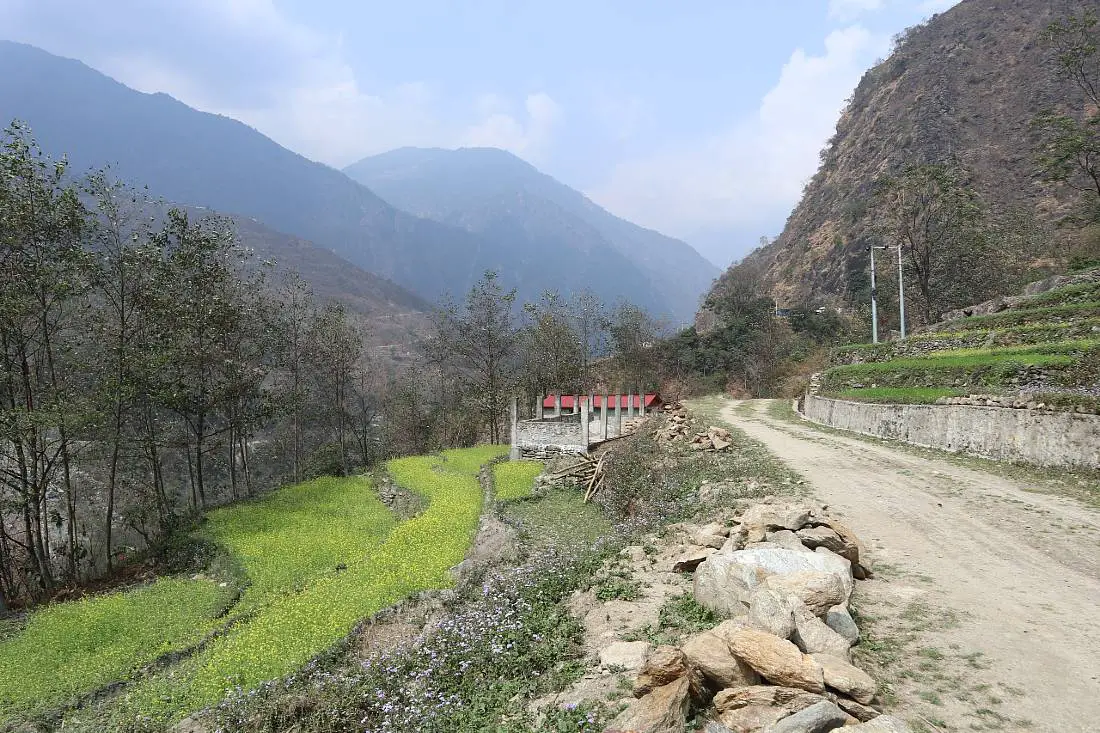
What To Pack For the Annapurna Circuit Trek
What you should pack for the Annapurna Circuit varies depending on what time of year you are going. I hiked the circuit in early March so I needed to bring warmer clothes than I would have needed for September, October, April, or May.

Thermals, a fleece, a puffer jacket, warm socks, gloves, and a wooly hat are all important for the colder months. And definitely bring toilet paper – there is none provided at any of the tea houses.
I have an extremely detailed packing list where you can see exactly what I packed, what I wish I had packed, and what I didn’t end up needing.
Insurance For the Annapurna Circuit Trek
You are required to have insurance for your trek (you will need to show it to get your ACAP). As many people suffer from altitude sickness while hiking and there have been a lot of helicopter rescues over the years, make sure you have insurance that will cover you for hiking up to 5,500 meters.
I went with a World Nomads Standard Plan which covers you for hiking up to 6,000 meters. I didn’t have to use it (luckily) so I can’t comment on how good they are but I have read mixed reviews.
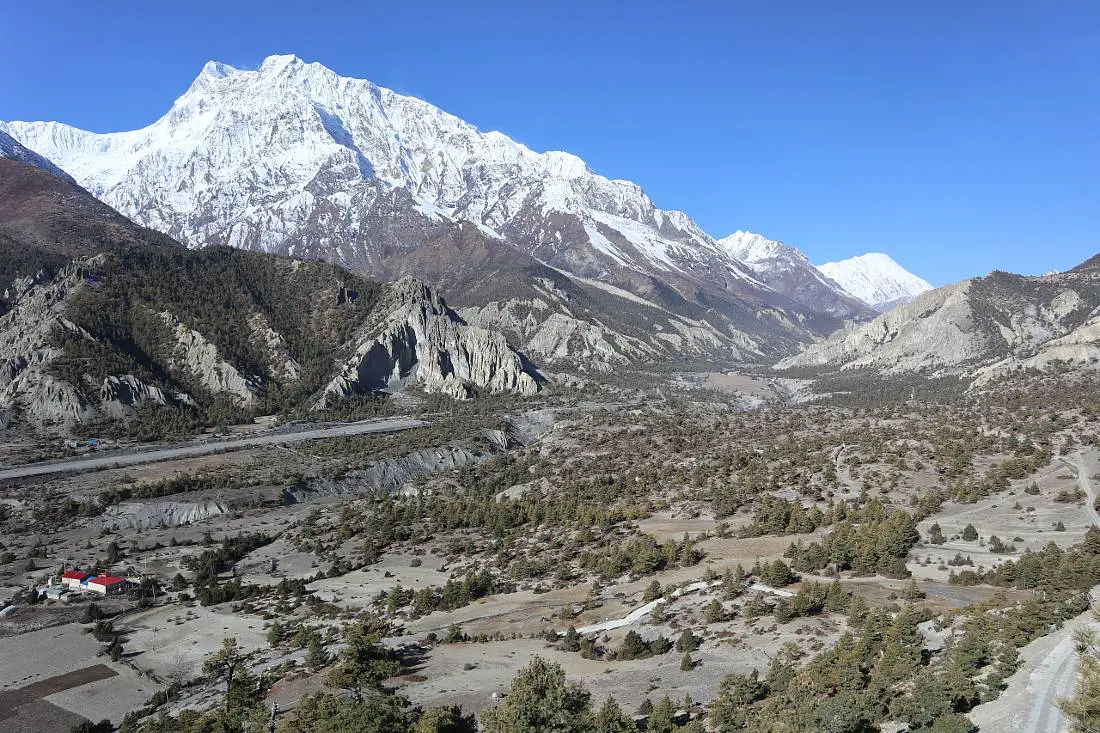
How To Get To the Start of the Annapurna Circuit Trek
The Annapurna Circuit Trek officially begins in Besisahar, where buses from Kathmandu and Pokhara arrive. The bus takes approximately 5 hours from Pokhara and about 8 hours from Kathmandu.
These times are approximate because the roads in Nepal are terrible and it can be really slow going, especially with the ongoing road works.
If you are taking the bus from Pokhara, it costs around 700-800 rupees (we paid 750 rupees each = $5.50), and you can either purchase it from a travel agent or from your accommodation.
The bus departs at 6.30am from the tourist bus park (named as such on Google Maps) off Rastra Bank Road. We were staying at the northern end of Lakeside and a taxi to the bus station cost 400 rupees.
If you are taking a bus from Kathmandu, you can also purchase your ticket from your accommodation or from a travel agent. The ticket costs around 1000-1500 rupees and buses leave at 7am. This is for a direct tourist bus of which there are multiple companies.
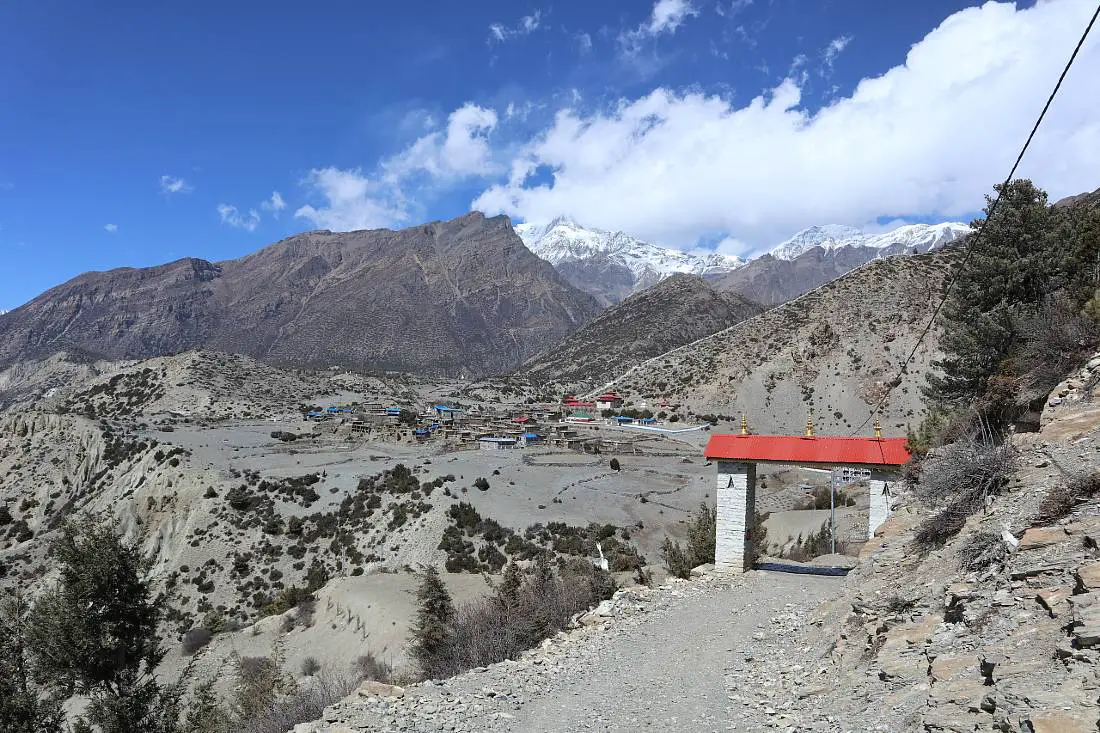
You will have to put your larger bags on the roof of the bus (it is then covered and roped up) so I advise you to keep your valuables and anything you need for the bus trip in a small bag on your person.
Also, put a waterproof bag cover on your larger bag in case it rains because the bags aren’t generally completely covered up on top.
If you are short on time and don’t want to start hiking from Besisahar, you could take a local bus another 7 km or so from Besisahar to Bhulbhule or a bit further to Ngadi (usually easy to do on the same day unless your bus from Kathmandu is really late) or hire a jeep (ask around in town) to take you as far as Manang.
I don’t recommend starting in Manang. The road to get there is rough going and you will spend a full day getting there by jeep. It is also essential to acclimate slowly.
Starting in Jagat or Dharapani are good options if you want to shave some time off and not miss too much beautiful scenery. If I did it again I would have taken the bus to Bhulbhule and hiked from there because the first day wasn’t super interesting.
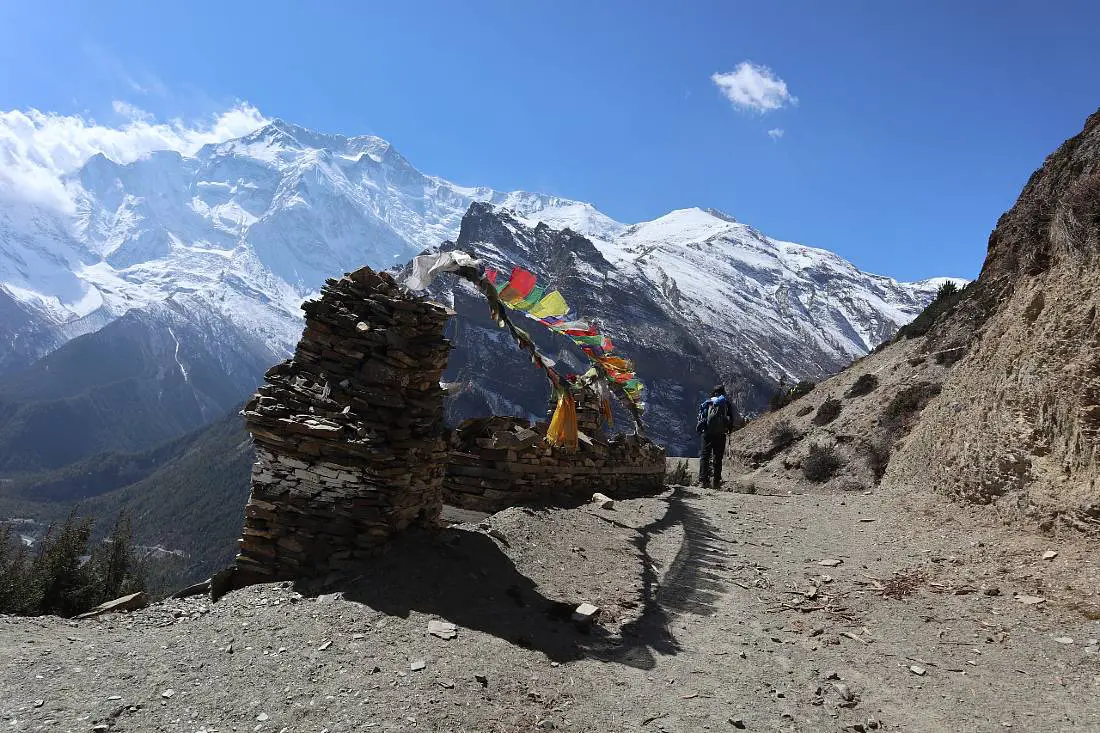
The cheapest way to back to Pokhara or Kathmandu when you finish hiking is by taking buses. We caught buses from Kagbeni to Jomsom, Marpha to Tatopani, and Tatopani to Pokhara without any issues.
Speak to your accommodation about how to purchase a bus ticket and where to catch the bus.
Alternatively, you could hire a jeep and driver but you are looking at $200+ depending on how far you are going. You can also enquire about getting a ride in a jeep at your accommodation.
Navigating When Trekking the Annapurna Circuit
We downloaded and used Maps.me for navigating on the Annapurna Circuit and it mostly steered us well. I also used detailed day-by-day descriptions of the trail from a couple of different blogs including this one and this one.
There are actually a lot of options for trails and you can also choose to hike on the road. Sometimes you don’t have a choice. We tried to avoid the road as much as we could without adding lots of extra miles onto our day.
Sometimes it can be hard to choose which trail to take and it can be a bit of a crapshoot because sometimes the trail may be closed at a point or it’s longer or harder than you think it’ll be. We ended up hiking an extra 3 km on an already long day on day two which wasn’t ideal, and we had to backtrack for about 20 minutes when we were hiking to Marpha because a bridge was washed out.
There are landslides often in the wet season so sometimes trails are closed and that won’t be updated on Maps.me so it’s important to speak to your hosts at the teahouses to see if they have any information about any trail closures ahead.
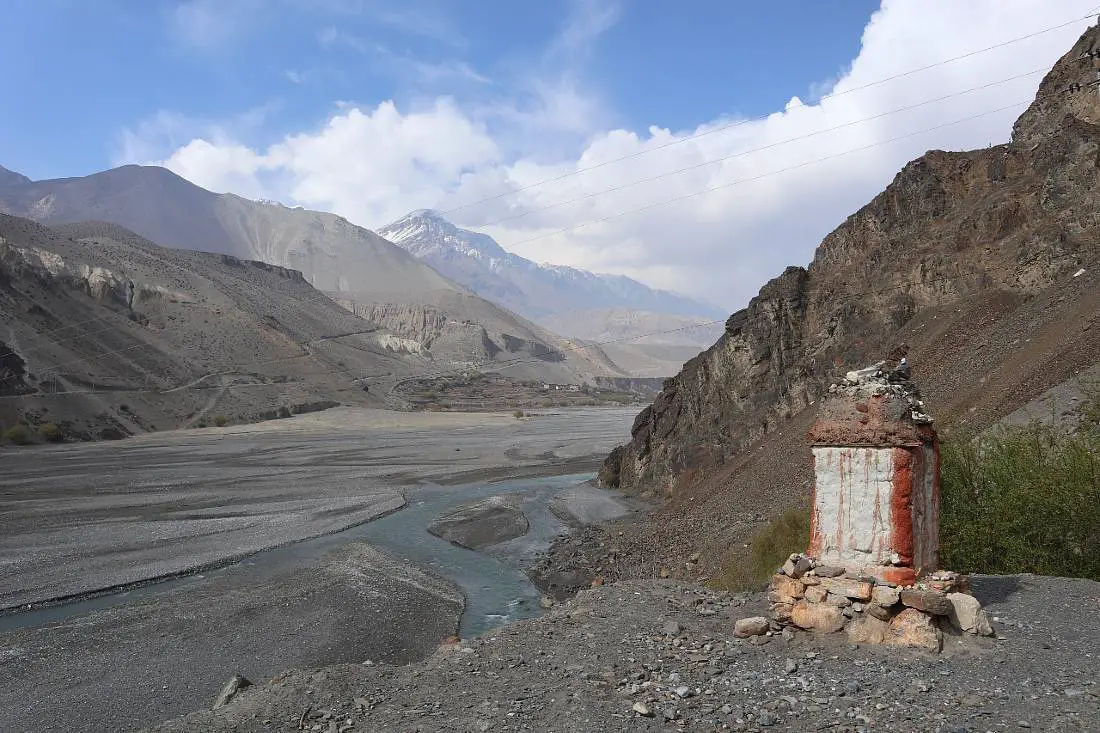
Sometimes there will be signs saying the trail is closed ahead before you even start hiking that way, and other times you may get an hour down a trail to then have to turn around and backtrack because the trail is closed.
This is when it is handy to have a guide with you because they hike these trails often and have a lot more firsthand information about whether a certain trail is closed or not.
I recommend reading posts on the Annapurna Circuit Trek Facebook group, there are lots of helpful posts from people who have just finished hiking (or are currently hiking) the circuit including what sections of trails are closed.
You can also purchase detailed guidebooks and topography maps. We purchased a topography map but didn’t end up using it.
Where To Stay on the Annapurna Circuit
The Annapurna Circuit is a teahouse trek and you will be staying in teahouses in the small villages along the Annapurna Circuit. If you are traveling with a guide, these guesthouses will be picked out for you but if you are traveling independently, you will just turn up in a town, find one that looks good, and enquire if they have any rooms.
At the beginning of our trek, we mostly negotiated a free room if we purchased dinner and breakfast at the teahouse and this was usually not an issue. We always made sure to get tea and apple pie on arrival too and to purchase some snacks.

Negotiating a free room if you are eating meals there is the norm on the Annapurna Circuit but I changed my view about this practice as time went on. The meals are very cheap, especially at lower elevations, and I don’t think it is fair to not pay for the room if you are eating your meals there.
The room prices are usually only a few dollars (this gets more expensive the higher you hike) which is not a lot for a Western traveler but goes a lot further for the locals so I encourage you to pay it as well as eating there.
Teahouse accommodation is pretty simple with no heating in the rooms, but these days you usually get free WiFi and some teahouses even have hot showers! If it’s really cold, you can ask for extra blankets. Some teahouses have rooms with private bathrooms but most of the ones we stayed in had shared bathrooms outside the rooms.
Most of the teahouse rooms we stayed in had twin beds rather than double beds, so I wasn’t able to utilize Toby’s body heat, unfortunately.
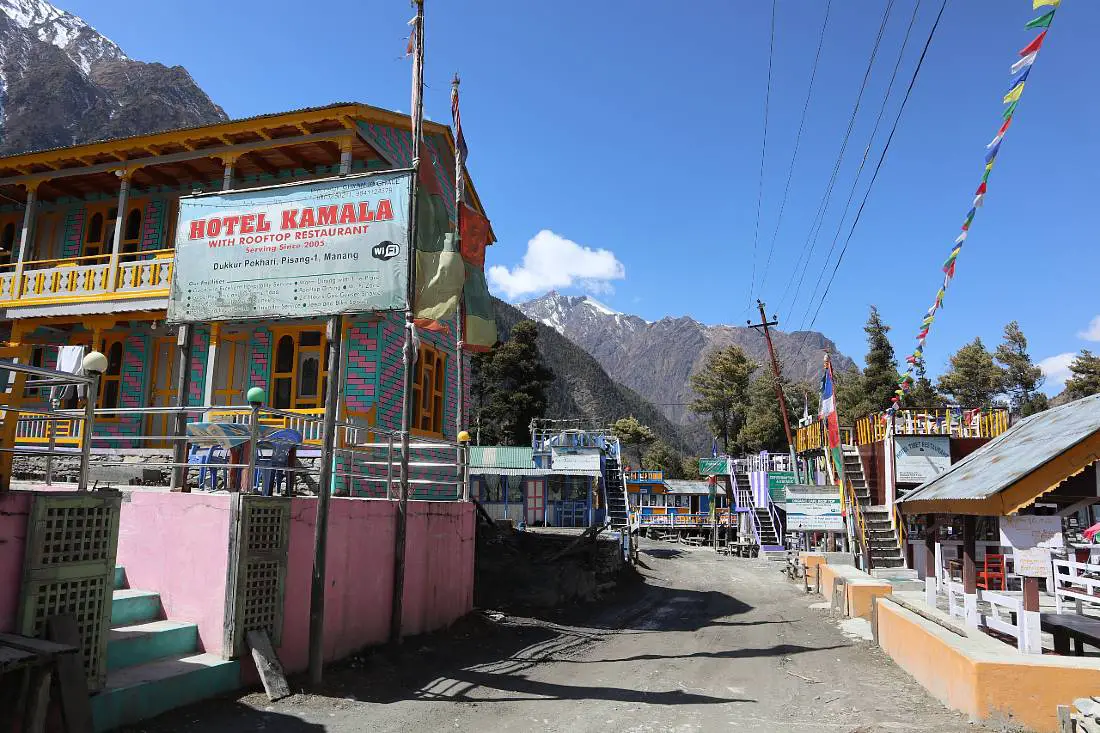
To stay warm in the evenings, you can hang out and meet other hikers in the dining room area as there is usually a potbellied stove that is lit for the evening and morning when it is cold. From Chame onwards, our room was too cold to stay in there longer than necessary.
We were lucky that in most places we stayed at there were Western-style toilets but it’s pretty much inevitable that you will come across squat toilets at some stage of the hike, especially between Manang and Muktinath.
Food on the Annapurna Circuit
While you will still find Dal Baht everywhere (Dal Bhat power 24-hour!), you can actually find a lot of other food options along the trail.
For lunch and dinner, Dal Baht is usually the cheapest option and is delicious so we ate that a lot. Dal Bhat consists of lentil curry, rice, curried potatoes, and pickled vegetables with a papadum, and you get unlimited free refills (except for papadums unfortunately).
We also had Thukpa (noodle soup), vegetable soups, pasta dishes, fried noodles, fried rice, vegetarian and chicken momos, yak burgers, sandwiches, and even pizza along the Annapurna Circuit.
For breakfast, I usually had porridge or a pancake with apples or bananas, Tibetan bread with honey, and boiled eggs. Boiled eggs are great to put in your bag for a snack later on and I did this often.

I also had almost daily apple pies – the Annapurna Circuit is known as the apple pie trail so it had to be done. We also found a few delicious bakeries that had apple donuts, cake, and cinnamon rolls.
For drinks, you can find bottled water, soda, beer, and even spirits and wine at some guest houses. Masala tea is everywhere and I loved the hot lemon and honey drinks and hot chocolate. Unfortunately, at most teahouses the coffee is instant but you’ll find real coffee at a couple of places along the way.
If I had been coming from New Zealand I would have packed some Jed’s coffee bean bags so I could make my own coffee because I really don’t like instant. Next time!
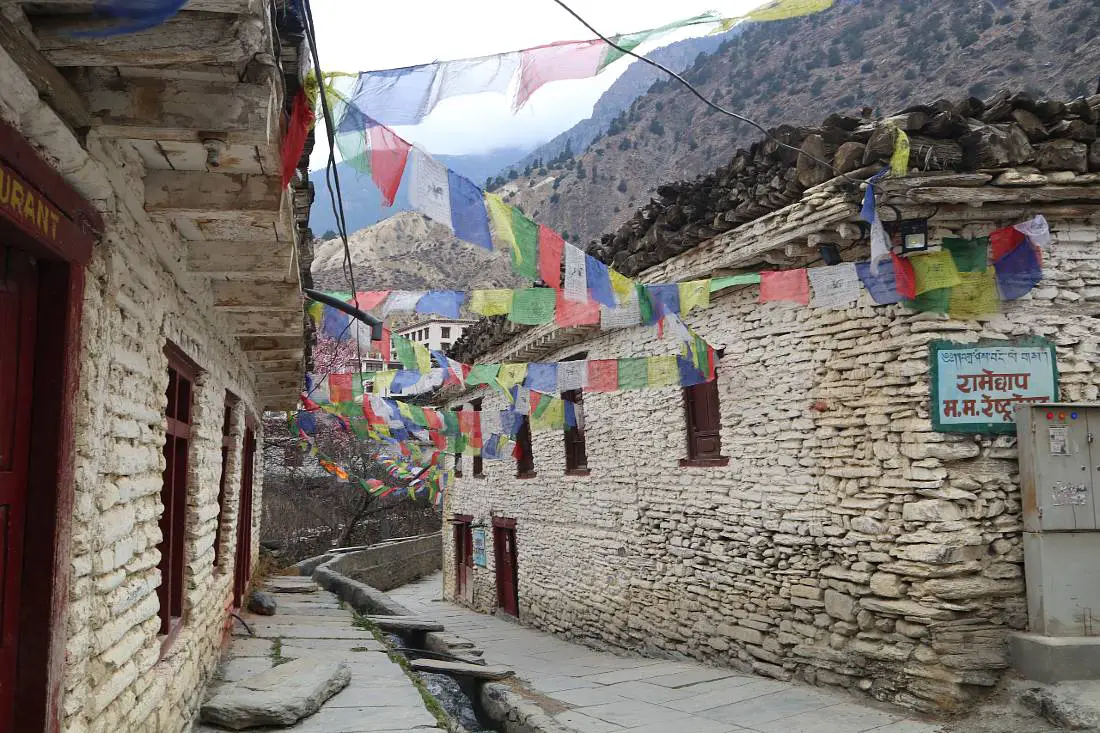
The food at the Tilicho Hotel in Manang- especially the cinnamon rolls, apple crumble, coffee, and vegetarian lasagne – was the best I had on the trail.
I also loved the apple donut and real coffee I had from the little glass pyramid cafe in Bhratang (after Chame), shakshuka and real coffee from Hotel Bob Marley in Muktinath, the yak burger happy meal from Yak Donald’s in Kagbeni, and the Dal Bhat and apple and custard pie from Hotel Sonam in Marpha.
If you are vegan or gluten-free, Dal Bhat will be your best friend (double check it’s vegan because some may have traces of dairy).
Annapurna Circuit Trek Cost
Your Annapurna Trek cost can obviously differ depending on how spendy you are. Toby and I are mid to high-end budget travelers these days so we wanted to have enough money to get occasional Western meals, daily apple pie, lots of tea, occasional beers, as well as having an emergency stash.
Our big unexpected splurge was hiring a porter for the Thorong La Pass day and we had to purchase some gear in Manang.
I tracked all of my Annapurna Circuit Trek costs during my 13 days of hiking (and the 1.5 days spent traveling back to Pokhara after) and I spent a total of $389. This works out to $27 per day. I didn’t include the cost of the porter for one day ($45 for my half) or the gear we bought in Manang, but this includes the ACAP permit and the bus to and from Pokhara.
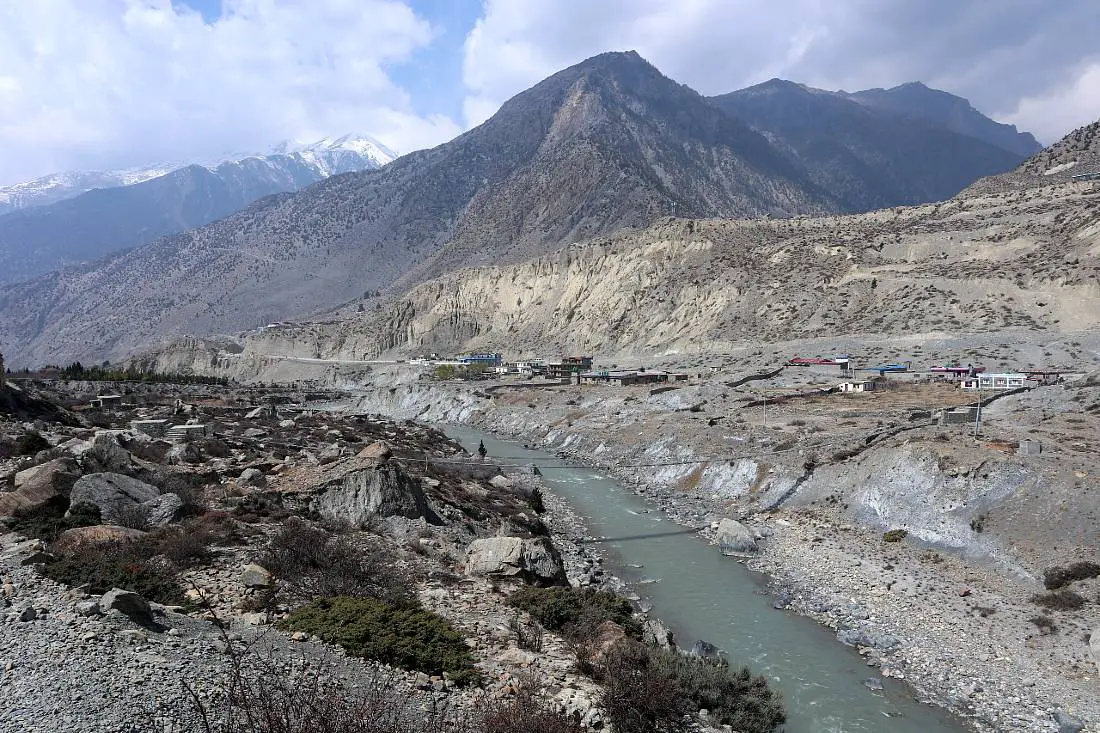
This is what we spent as independent trekkers. If you are going to hire a guide the going rate is usually $25-$35 per day (per guide, not per person) and a tip of around 10-20% is the norm. If you are hiring a porter to carry your bag, this is generally $15-$25 per day.
Also keep in mind that for most of our trek, we didn’t pay for accommodation, except in Manang, Yak Kharka, Kagbeni, and Marpha, so if you are paying for accommodation every night that is a few more dollars per day.
These are some of the costs for when I trekked the Annapurna Circuit in March 2023:
- Bus from Pokhara to Besisahar 750 rupees
- Chocolate bar 200 rupees
- Plate of vegetable momos 550 rupees
- Room with attached bathroom 300-1200 rupees
- Local bus from Kagbeni to Jomsom 250 rupees
- Hot springs entry in Tatopani 150 rupees
- Local bus from Marpha to Tatopani 1000 rupees
- Local bus from Tatopani to Pokhara 900 rupees
Important Tips For Your Trek
- Get out enough cash to last you for the full trek as there are only a couple of places to get cash along the way (Manang is one of the main ones) and the ATMs aren’t always working. I recommend $30-$35 per day for the Annapurna Circuit Trek cost to be on the safe side.
- Download Maps.me for the full Annapurna Circuit Trek
- Download any blog posts with information that you want to read when you are offline (hint, hint)
- Have a printed copy of your insurance details, you’ll need this for the ACAP but it’s good to have in case something happens on the trek.
- Purchase some snacks and something to eat for lunch on the first day. You may be stuck on a bus for most of the day and you want to hit the ground running when you arrive in Besisihar.
- Purchase a Nepalese SIM card. It’s good to have this for coverage when you are staying at a teahouse with no WiFi and in case you need to call emergency services or your insurance provider.
- If you do hire a guide, or a porter, or go with an organized group tour, make sure to take cash for tipping. I believe $5 per person per day is customary.
- For cold nights, fill up your Nalgene with boiling water and sleep with it in your sleeping bag. It will warm you up a lot. We didn’t have a Nalgene with us so we purchased large plastic water bottles, put the water in our water bladders then asked them to fill the bottles with boiling water. They do lose their shape from the heat but we didn’t have any issues with leaking.
- Consider if you want to use Diamox to avoid altitude sickness. Read up on the side effects and maybe try it out at lower altitudes first to make sure you don’t have a bad reaction. We used it because I got altitude sickness on the Inca Trail and it was horrendous. The only side effects we got were occasional pins and needles in our feet and on my chin, weirdly enough. Neither of us had any symptoms of altitude sickness for the whole trek, not even a headache. You can get it prescribed by your doctor or get it over the counter once you get to Nepal.
- You may be trying to decide whether you want to hire a porter to carry your bag. If you can pack light I don’t think it’s necessary BUT you can find porters along the trail to hire for even just a day. We ended up doing this for the summit day because Toby was worried about his bad knee on the 1,600 meters downhill after getting over the pass and I was worried about my asthmatic breathing at high altitude. We spoke to staff at the lodge in Thorong Phedi and they found someone for us. It won’t be cheap if you do this (it costs us $90!) but for us, it was so worth it and made our summit day so much more pleasant.
- You can also hire a mule to take you over the pass, we saw an older woman on a mule being led by a guide. It took her from High Camp to just before the pass.
- If you are hiking in the shoulder season like us and aren’t sure if you need some items like microspikes, there are a couple of gear shops in Manang that aren’t ridiculously priced. You can get trekking clothing, trekking poles, gaiters, microspikes, snacks and more. We even paid to get our laundry done in Manang.
- Don’t ascend more than 300-400 meters per day over 3,000 meters. If you follow this rule you are less likely to get altitude sickness. If you can, after dropping your bags at your teahouse home for the night, do an acclimatization hike 100-200 meters further up and back. This will further help with acclimatizing to the high altitude.
- Before deciding your route outline, take into account what you want from this experience. For me, I enjoyed starting early, hiking for 4-7 hours, and then spending the afternoon and evening relaxing, chatting with other trekkers, and reading at the teahouse. We met a guy who was hiking 30km a day because he found hanging out in the teahouses boring, and that suited him. To each their own.
- If hiking out of the four main hiking months (March, April, October, and November), be aware that not all teahouses and shops, etc will be open yet. As we hiked at the beginning of March, a couple of weeks before the spring season started, we did see that a few places were closed. The clinic that does the free acclimatization talk and the movie theater weren’t open in Manang when we were there which was a bummer.
- For checking the weather on the Annapurna Circuit, I used this website. It seemed to be pretty accurate when I was hiking and it also has temperatures for different altitudes which was really helpful.
I hope this Trekking Annapurna Circuit guide was helpful. Let me know if you have any questions or feedback.
If you enjoyed this post, check out my other multi-day hiking posts:
- Ultimate Lightweight Annapurna Circuit Packing List
- Hike From Aspen to Crested Butte: The Best Hike in Colorado
- Hiking the Tongariro Northern Circuit: One of New Zealand’s Great Walks
- Trekking Kalaw to Inle Lake: The Best Trek I Have Ever Done
- Pushing Myself to the Limit on the Kepler Track Great Walk
- The Best Kauai Hiking Adventures
- Hiking to Abbot Pass Hut in the Canadian Rockies
- Hiking the Hillary Trail on Auckland’s Wild West Coast
- Hiking Between the Pueblos Mancomunados Villages in Mexico
- Dealing with Altitude Sickness on the World-Famous Inca Trail in Peru
PIN IT!

